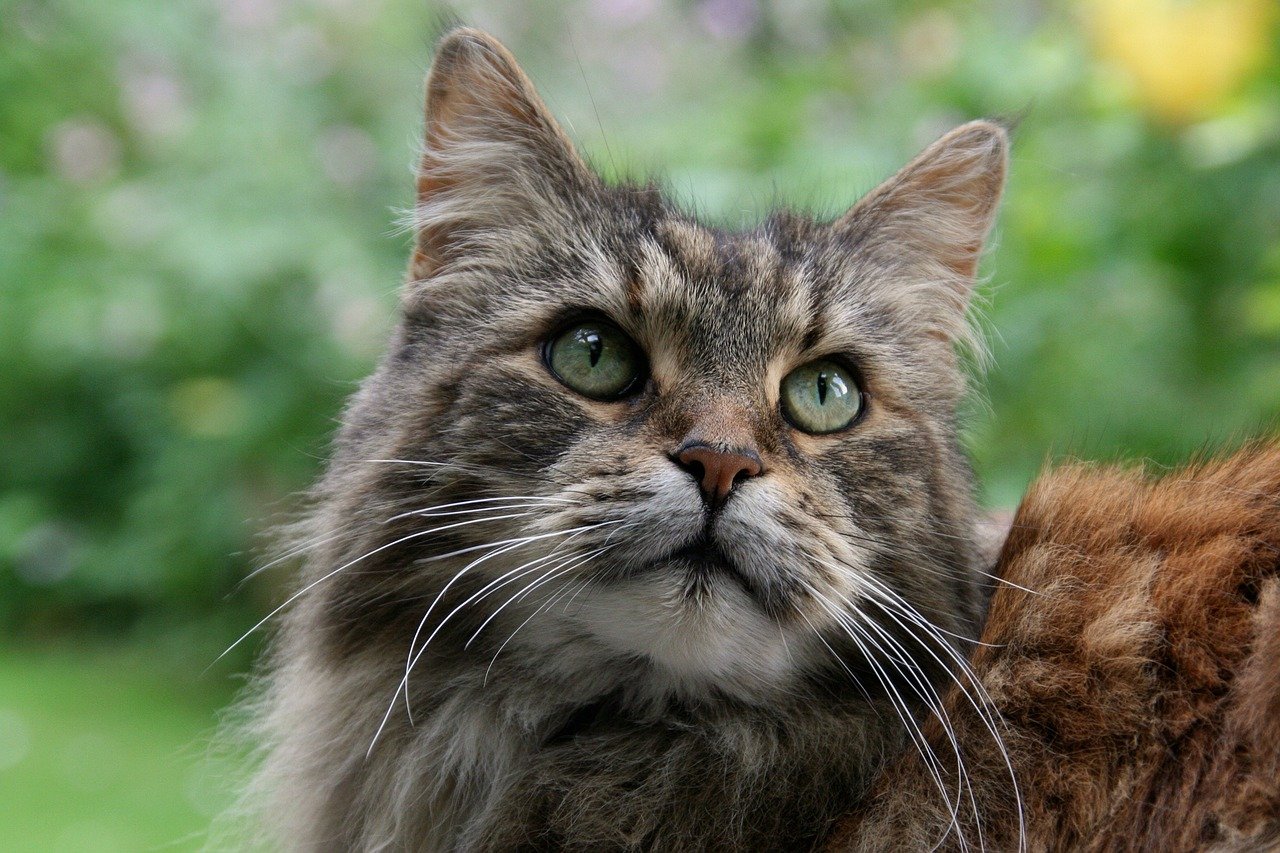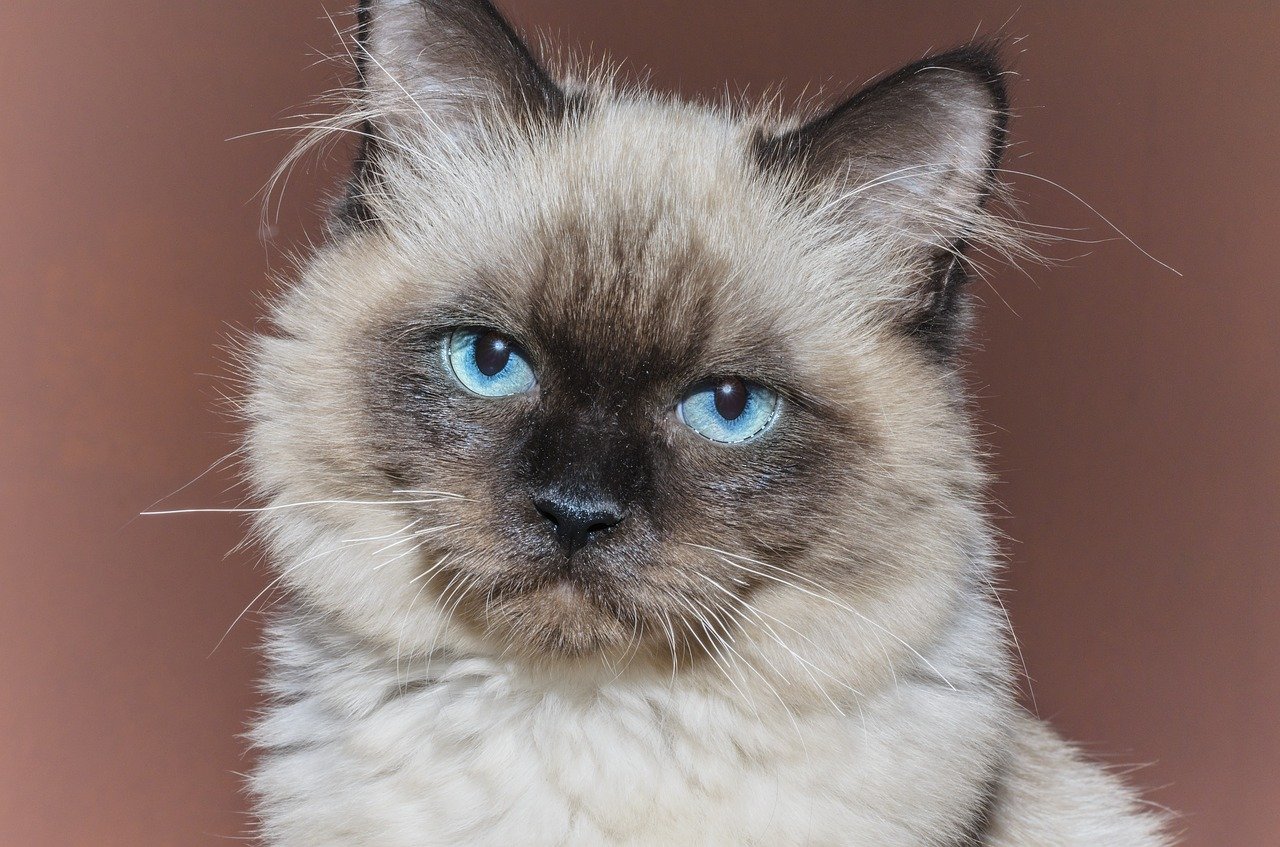
While all cats are wonderful, some breeds aren’t as tolerant of apartment life as others. Just because most breeds are small doesn’t mean they enjoy living in a small space. Some breeds, like Bengals, are prone to bouts of explosive energy and may wreak havoc if they don’t have enough room to spread out. Siamese cats, known for their loud, raspy vocalizations, may not be the best fit if you live in a building with thin walls and easily irritated neighbors. Have you ever searched “cat breeds good for apartments” and still felt unsure by the end of the article? We’re here with the definitive list of the eight best cat breeds that are good for apartments.
1. American shorthair
Initially brought to the United States on the Mayflower, the American shorthair was first used to catch rodents on ships. Easygoing and affectionate, an American shorthair is happy to play with pet parents, but she’ll also play on her own without demanding constant attention. Females weigh 8–12 pounds on average, with males weighing a bit more. Because American shorthairs are solid, muscular, and prone to obesity if they become too sedentary, you’ll need to watch your cat’s diet to prevent weight gain. Frequent brushing is essential to cut down on shedding and prevent mats.
2. Birman
The breed got its start as temple cats in Burma (now Thailand), where they were raised and cared for by Kittah priests. The average Birman weighs 7–12 pounds, and while their coats are long and thick, they don’t shed much. Brush her once or twice a week to keep her coat healthy and glossy. Birmans are calm and docile with soft voices, so your neighbors are unlikely to complain if your cat is particularly chatty. Despite being more sedentary than many breeds, Birmans love to play with their pet parents between snuggle sessions.
3. British shorthair
Great Britain’s oldest cat breed is now one of the best breeds for apartment dwellers. If you’re frequently away from home, the British shorthair is an ideal cat for you. Quiet and independent, British shorthairs are perfectly happy to spend time alone. When you’re at home with her, be prepared for affection and loud, contented purring. They tend to make soft, squeaky sounds instead of meowing, which is especially endearing in such powerful, hardy cats. Known for their adorably full faces and large, round eyes, they can weigh anywhere from 7 to 17 pounds. Weekly brushing is necessary to control shedding, but they’re a naturally healthy breed with few health problems.
4. Maine coon
Originally from Maine, as the name suggests, Maine coons started off as mouse catchers. While they may catch catnip mice these days, these massive cats are probably not a breed most would think are suited for apartment living. While the average Maine coon weighs 9–18 pounds and measures 30–40 inches, some can reach up to 35 pounds. Maine coons enjoy playtime, but they’re most often content to be near you while you go about your day. Fortunately, the Maine coon’s patient nature makes brushing her a pleasure rather than a chore.
5. Persian
Hailing from Iran, then called Persia, the Persian is the most popular purebred cat in the United States. Persians usually weigh 7–12 pounds, but their coats make them appear heavier. Her long, glamorous coat needs daily brushing to prevent matting, and she’ll need to be bathed regularly. Despite her grooming needs, she’s well worth it. The Persian is renowned for her sweet temperament and cuddly nature. Persians are ideal if you want a low-energy cat who won’t get into trouble while you’re at work. They’re quiet, docile, and not prone to jumping or climbing furniture. Their flat faces make them sensitive to heat, so it’s best not to leave your Persian outside unattended during hot weather.

6. Ragdoll
One of the newest breeds on the block, the Ragdoll was created in California in the 1960s. Named for their love of being carried around like a doll, the Ragdoll is a true sweetheart. Females weigh between 10 and 15 pounds, with males sometimes tipping the scales at over 20 pounds. Gentle and affectionate, the Ragdoll gets along with all members of the family, including dogs. Her medium-long coat needs twice-weekly brushing to prevent tangles, but she won’t shed all that much.
7. Russian blue
Well known for their blue-gray coats, Russian blues may also have barely there stripes in their fur. They’re on the smaller side compared with several breeds on our list, usually weighing between 7 and 12 pounds. Russian blues don’t shed much, and because they produce lower levels of Fel d 1, a common allergen, they make great pets for those with allergies. While Russian blues are affectionate with the entire family, they usually avoid strangers and tend to form a closer bond with their favorite person. Russian blues are calm, loving, and content to be left alone while you’re away from home.
8. Sphynx
The sphynx cat’s hairless appearance cropped up overnight, a spontaneous mutation we find adorable. Highly intelligent, sphynx cats are devoted to their pet parents and love nothing more than to cuddle. (Some of that is due to their affectionate nature, but sphynx cats also get cold easily.) They’re fairly small, weighing 6–14 pounds, and despite their reputation as hairless cats, they’re covered in a fine layer of peach fuzz. You’ll need to bathe your sphynx regularly to prevent oily buildup on her skin, but she won’t shed.




